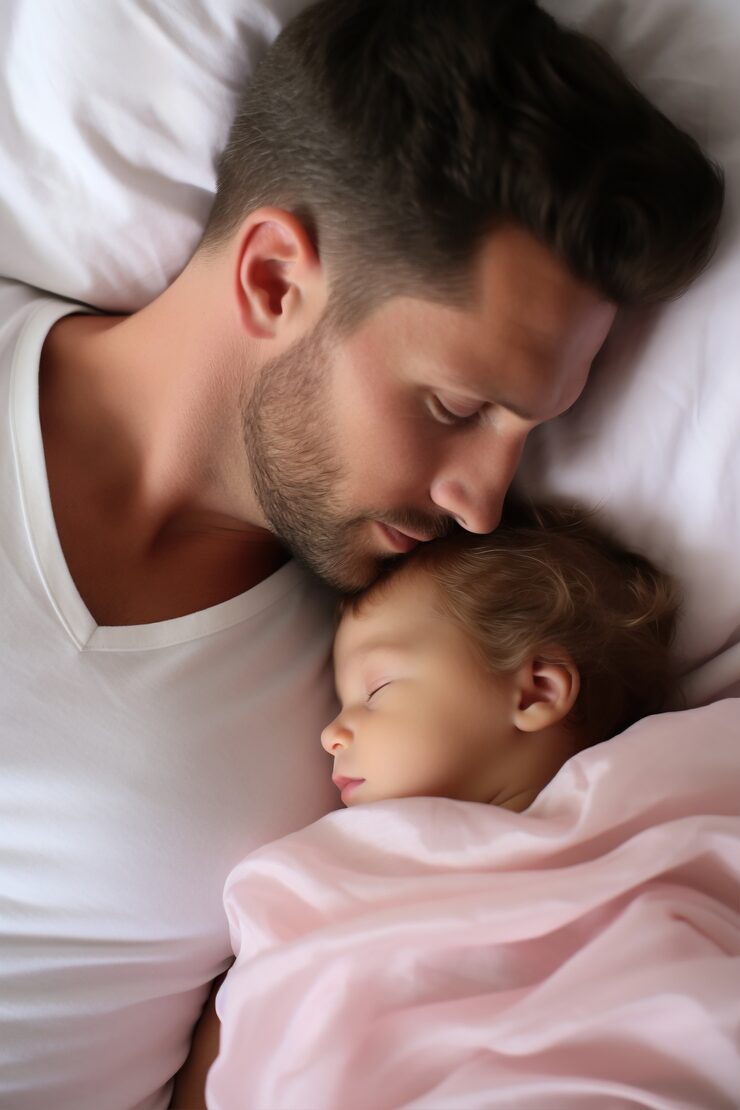
sleep coaching FAQs
Common questions
For more details and to discuss your specific needs, don’t hesitate to reach out to request a free consultation.
Sleep training is teaching your little one to fall asleep and fall BACK to sleep without being dependent on anything external such as rocking, feeding, or bouncing to sleep.
No, sleep shaping is for newborns up to the first 4 months. We work with you on developing good sleep hygiene and habits / bedtime and daytime routines.
Yes, for babies under 6 months old, we don’t need to remove night feedings to teach our babies how to sleep through the night. This will just come as the baby no longer associates feeding with sleep and increasing caloric intake to daytime hours. After 6 months old we might need to address night waking as part of our goal of sleeping through the night.
For infants 16 weeks old until your little one moves to a toddler bed, I typically use one of two methods. The first method is a check and console method, where you will be offering reassurance to your baby in set intervals. The second method allows you to sit next to the crib and slowly get farther away each night. I like these two methods with a toddler in a crib as well. Once the toddler is in a bed we have to have incentives to stay in bed. A “stay in the room” approach that turns into “I’ll be back in a minute!” works great for this tough transition.
Though these methods sound easy peasy, they can’t quite be summed up in one or two sentences. There will be lots of troubleshooting during our time together to reach our goal of a consistent, independent sleeper.
Some crying is often part of the sleep training process. While many parents hope for a “no cry” method, the truth is that all children respond to change differently—and with change often comes protest. Crying is a natural form of communication, and research shows that when a child’s core needs are met, crying during sleep training is not harmful to their development or attachment.
Sleep training doesn’t mean leaving your baby alone to cry. You can absolutely be present and offer reassurance —through your voice, touch, or presence—even if it doesn’t always stop the crying in the moment. What matters most is that your baby feels safe, supported, and has the opportunity to begin learning self-soothing skills, which are valuable not just for sleep, but for emotional regulation in everyday life.
The goal isn’t to eliminate all crying, but to approach it with calm, consistency, and compassion.
Yes, it’s completely normal for babies and toddlers to experience sleep disruptions—even after sleep training. Teething, illness, travel, and developmental milestones can all temporarily impact sleep.
That said, not every baby regresses at the same age or in the same way. Sleep isn’t a straight line—there will be ups and downs, and that’s okay. The good news is that once your baby has developed strong sleep habits, it’s much easier to get back on track after a rough patch. Sleep training isn’t a one-time fix —it’s the foundation that helps your family navigate future changes with more confidence.
That’s completely normal in the early weeks—your baby finds comfort in being close to you. Sleep shaping is all about gentle, gradual shifts. You might start by offering just one nap a day in the crib or bassinet, or by waiting a moment before responding to every stir. Small, consistent steps add up over time and help your baby build independent sleep skills at their own pace.
Yes! In fact many of the newborn and infant clients I work with are breastfeeding. We will continually keep an eye on your supply and ensure that you are emptying your breasts the amount of time that your body needs to keep making the amount of milk your baby needs.
There is a philosophy of sleep training that involves working on night sleep before moving onto naps. However, I have not found that to be the most efficient method and with some babies you will not see success at night until you remove all sleep associations, both during the day and at night. If you think about it, it isn’t very fair to your baby to rock, feed your baby to sleep, or hold your baby all day for naps, but come bedtime put your baby in the crib and expect him to use his self-soothing skills. There will often be ongoing protest and night wakings, rather than just protest the first couple of nights when we work on nights and naps together. We will start the plan on night #1 at bedtime, and move to naps the following day.
We focus on age-appropriate rhythms like:
Following wake windows to prevent over-tiredness
Creating a consistent, calming bedtime routine
Offering naps in a familiar sleep space (like a crib or bassinet)
Separating feeding from sleep when baby shows readiness
Practicing “Practicing calm and awake” when it feels manageable
Sleep shaping is flexible and developmentally appropriate. And if your baby is 8–10 weeks or older and you’re just getting started, that’s completely okay—it’s never too late to begin.
I have not found sleep training to be effective if continuing to bed-share. This is because the baby or toddler will still have an association present, YOU, which can cause lots of crying with no real progress, or continual regressing in self-soothing skills. Our first step in working together, will be to move the baby into a crib or bassinet as part of your tailored sleep training plan.
Room-sharing is a YES! Whether you aren’t ready to move your baby into a different room or you don’t have any option for moving the baby into another room, room-sharing is an option that should not cause lasting problems with the sleep training process. It may be a tad harder at first, but we always reach our goals even with room-sharing. I know all the tips and tricks that work to ensure that your little one can fall asleep and stay asleep, even in the same room as you!
Yes! Sleep challenges aren’t just for babies – I absolutely work with toddlers and children up to 6 years old. Whether your child is struggling with bedtime battles, frequent night wakings, early rising, or needing a parent to fall asleep, it’s never too late to improve sleep.
We offer a variety of sleep coaching packages to fit different family needs and budgets. To explore all available options, please visit our Sleep Coaching Packages page.
If you’d like to learn more about which package is best for your family, you can book your free discovery call here instead of filling out the form — we’ll be happy to guide you through the process.
I don’t offer a money-back guarantee, and here’s why: sleep success depends on both of us showing up and staying committed. Babies aren’t robots—sometimes things take longer or look different than expected. It’s not about perfection; it’s about consistency, flexibility, and trust in the process.
What I can guarantee is that I will be right there with you. I’ll support you until we reach the goals we outlined together in your customized sleep plan. While most families see solid progress within the two-week support window, some little ones need a bit more time due to milestones or schedule shifts. I’ll make sure you feel confident and equipped to keep going, even after our final consult.


